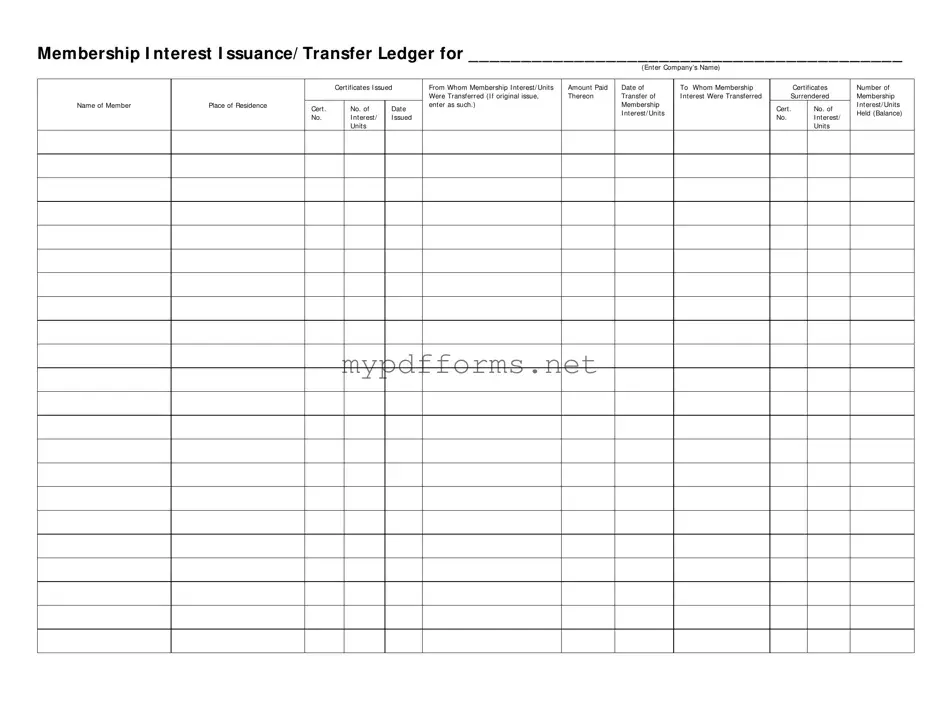The Membership Certificate is similar to the Membership Ledger form in that it also documents ownership of membership interests within a company. This certificate serves as proof that an individual or entity holds a specific number of units or interests. Like the ledger, it includes essential details such as the member's name, the number of units held, and the date of issuance. Both documents are crucial for maintaining accurate records of ownership and transfers within the organization.
The Transfer Agreement is another document that parallels the Membership Ledger. This agreement outlines the terms under which membership interests are transferred from one party to another. It typically includes information about the seller, the buyer, the number of units being transferred, and the price. Like the ledger, it plays a vital role in tracking changes in ownership and ensuring that all parties are aware of their rights and obligations during the transfer process.
The Shareholder Register is akin to the Membership Ledger as it maintains a record of all shareholders and their respective ownership stakes in a corporation. This register includes details such as the names of shareholders, the number of shares owned, and the dates of acquisition. Similar to the Membership Ledger, it is essential for ensuring transparency and accuracy in ownership records, especially during shareholder meetings or corporate actions.
The Capital Contributions Ledger is comparable to the Membership Ledger in that it tracks the contributions made by members or shareholders to the company. This document records the amount each member has invested, the date of contribution, and any changes in capital over time. Both ledgers serve to provide a clear financial picture of the company and its members' investment history.
The Membership Interest Transfer Form shares similarities with the Membership Ledger as it is used to document the transfer of membership interests. This form captures details about the transferor, transferee, and the number of interests being transferred. Like the ledger, it is essential for maintaining accurate records of ownership changes and ensuring compliance with company policies and regulations.
The Operating Agreement may also be compared to the Membership Ledger, as it outlines the management structure and operational procedures of a company. While it does not track individual membership interests, it provides context for how those interests are managed and transferred. Both documents are crucial for ensuring that members understand their rights and responsibilities within the organization.
To ensure compliance and proper documentation, professionals involved in managing membership interests and contributions should also be aware of the necessary regulatory frameworks in their state. Understanding forms like the Membership Ledger and the related documentation is critical, much like how individuals must familiarize themselves with the Illinois Forms when applying for licensure in various fields, ensuring all legal requirements are met for responsible and accurate ownership tracking.
The Dividend Distribution Record is similar to the Membership Ledger in that it tracks the distribution of profits to members based on their ownership interests. This document details how much each member is entitled to receive, the dates of distribution, and any adjustments made over time. Both records are essential for maintaining transparency and fairness in how profits are shared among members.
The Annual Report often resembles the Membership Ledger in that it summarizes the company's financial performance and ownership structure over the past year. While it does not provide the same level of detail about individual membership interests, it includes aggregate information that reflects the overall health of the company. Both documents are important for stakeholders to understand the company's status and make informed decisions.
